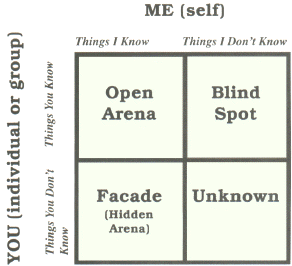Playing your cards close to your chest, and maintaining a poker face, while subscribing to a Star Trek “shields up!” mentality, may be dangerous to your workplace satisfaction and success.
Why do some people insist on going it alone at all times and at all costs? Why do some people feel that being “professional” means being technically polite and gracious but, in reality, cool, distant and veiled? Why is it that some colleagues are convinced that self-disclosure and the sharing of free information is the worst thing they could possibly do? These are definitely politically correct and fragile days, and there are definitely times when it’s politically savvy to keep your thoughts and feelings to yourself, however, there are more benefits than pitfalls to consciously building workplace relationships and letting others in.
People will only rally around, in your moment of personal or professional crisis, if you are likeable—a “nice guy”. Just ask George Radwanski (recently released from his duties as Canada’s Privacy Commissioner, amidst allegations of expense account gouging and non-payment of over one half million dollars in taxes). Radwanski insisted that he was a victim of “character assassination” and “vicious, untrue and distorted” allegations. Canada’s Globe and Mail newspaper columnist, John Ibbitson, recounts these Radwanski “cries” in his June 24, 2003 article entitled, “Commissioner lacked friends in both high and low places”. To Radwanski’s complaint that no one was willing to step up to the plate, Ibbitson retorts, “But that, Mr. Radwanski, is exactly the point. You made everyone mad at you, and when you got into trouble you expected them to rush to your aid. Don’t you know anything about office politics?”
Sharing appropriate, tasteful and well timed personal information, and opening up to at least some self-disclosure in the workplace, builds trust, relationship and loyalty—all values most individuals and organizations say they champion.
The classic Johari Awareness Model/Johari Window (derived from the psychologists’/authors’ names, Joseph Luft and Harry Ingham) is a useful framework for examining how we relate to others. Interaction between people, and resulting productive relationships, depends on the extent of openness as well as the context in which it takes place.
Think of yourself as a window with cross bars, creating four equal window panes. It’s through this window that you look out on to your world, and it’s through this same window that others look in, to experience you! The model visually implies that each quadrant consumes 25% of your total “window”; unknowingly, some may establish their “windows” in such a way that their panes are disproportioned.
The upper left quadrant is the “Open or Public Arena”. It’s in this quadrant that we most consciously reveal ourselves. In a positive light, it’s in the Public Arena where we are most charismatic, magnetic and “attractive” to others. I call this pane, “The Real Me”. When we’re looking out on to the world
from the Public Arena, we appear (and truly are) most comfortable and confident in our own skin…and it shows! “What you see, is what you get!”
A play on two sentences is applied to each of the quadrants. The sentences for the Public Arena: “I know these things about me”, and, “You know these things about me”. There may be times at work when you know how to operate from the Public Arena, but, being the politically savvy employee that you are, choose not. The question becomes, “To what extent are the current dimensions of my Public Arena window helping or hindering my desired results? for my own day-to-day workplace satisfaction? for my team? for my customers or clients?
Most of us feel more comfortable with some workplace colleagues or clients over others. In such cases, we are most likely operating from our Public Arena window. What about those other people? Have you ever caught yourself watching yourself interact with those other individuals—like a play within a play? Have you ever asked yourself, in such instances, “What’s coming over me? Why am I acting this way with this individual? This isn’t like me?” If you have experienced this personally atypical behaviour, from time-to-time, in that moment, you were probably operating from the lower left window pane of “Mask/The Facade”. I call this the “Who I Pretend to Be.” It’s when you are keeping your cards closest to your chest—not sharing any information with others, nor any self-disclosure—that you are most heavily Masking. Think of Tim Rice’s lyrics to “Masquarade”, from Andrew Lloyd Weber’s theatre musical, “Phantom of the Opera”: “Marquarade. Painted faces on parade. Hide your face so the world will never find you.”
The sentences for Mask: “I know these things about me” but “You don’t know these things about me!”. There’s definitely a time and place when Masking is wise. The questions become, “Am I really aware of the extent to which I Mask at work? Is the degree to which I Mask justified or merely habitual…perhaps based on my upbringing or past workplace experiences? Does the degree to which I Mask help or hinder the results I want…for myself? my team? my clients/customers? my organization’s overall success? What positive results might occur if I let down some of my Mask? What positive results could occur if I revealed more about myself to others than I currently do?”
The upper right quadrant is entitled, “Blind Spot”. Everyone has Blind spots. Everyone. And everyone else gets to see you in a way that you will never see yourself! That’s because you’re on the inside looking out, and they are on the outside looking in…at you! When it comes to knowing ourselves objectively, at least some of the time, we’re “too close to the material”…like those 3D, “Magic Eye” pictures that are just a bunch of squiggly lines when presented too close to your face but, once pulled back (for greater field of vision), reveal a fantastically detailed and textured truth.
The two sentences for Blind Spot: “You see these things about me”, but, “I don’t see these things about me!” Some may argue, “I can see what others see about me by filming myself or by simply looking in the mirror!” Nah, ah…these examples will only give you the reversed, two-dimensional version of the “Really McCoy”; all others see your 3D, live “show”! This is why 360 degree feedback surveys are popular with enlighten organizations. It’s also why these same progressive organizations conduct customer/client satisfaction surveys and take action on the results!
Facilitative questions for “Blind Spot” include: “What Blind Spots may be standing in the way of my desired results, or the impression I wish to make? Who can I ask/who do I trust or respect to share their observations about my “ways”, so that I may make adjustments? What positive results could occur if I discovered and acted on more of my Blind Spots?”
The lower right quadrant is “Unknown”; I call it, “Hidden Potential”: “I don’t know these things about me”, and “You don’t know these things about me”. That’s why it’s “Unknown”! I throw in a “P. S. …
“Y-E-T!”
A question to ask yourself…”What positive results could occur for me, my team, organization, etc., if I discovered more of my hidden potential?”
Remember, the model is presented as though you spend 25% of your time in each of the quadrants. It doesn’t have to be that way! You can expand any of your quadrants (and, thereby shrink others) of your own choosing and actions. In which quadrant are you most likely to experience the greatest amount of comfort, confidence and professional satisfaction? From which quadrant are you most likely to make a powerful and real contribution? The Public Arena. So work on expanding your Public Arena!
How big is your current Public Arena window? Would you like to expand your P. A. (Public Arena) instead of your “B. S” (forgive me-Blind Spot!)? Here’s how:
- Push down on the horizontal lower line/the floor of your Public Arena pane, expanding the space for your “Real Self” to shine through, and, thereby, shrinking the square footage of your Mask. Do this by deciding, today, with whom, where and when, you will deliver a little more “Real You” and a little less “Mask”, when next you connect.
- Expand the “eastern border” of your Public Arena pane (the vertical right side), thereby shrinking your Blind Spot, by being open to feedback from others with whom you interact.
- If you horizontally push down on your Mask and vertically shrink your Blind Spot (reducing your B. S. to a thin vertical column, rather than a full square), you’ll automatically increase the square footage of your Public Arena. The spin-off effect is that you will unveil some of your Unknown and absorb it into your newly redefined Public Arena. Your Public Arena pane can be as much as two thirds, or more, of your total personal “Window”. You get to decide!
There are distinct and measurable benefits from building and sustaining good working relationships through the sharing of free information and self-disclosure. There are also pitfalls from choosing not to—just ask George—for whom no one would positively come forth…not even his closest staff!
What one may “get” from this practice is not why one should do this…but it certainly is a fine benefit! It’s the old Stephen Covey metaphor of the “Emotional Bank Account”. You must make deposits along the way, so that there’s something from which to draw when need be. And sooner or later, the need will surely be!
*For a more in depth study of the Johari Window, sleuth out Paul Heresy and Ken Blanchard’s book, “Management of Organizational Behaviour: Utilizing Human Resources”, or Ian McGill and Liz Beaty’s, “Action Learning: A guide for professional, management and educational development”.
*To experience the interactive exercises that I’ve designed to bring the Johari Window “to life” (for my client’s’ Team Building, Interpersonal Communications or other in-house professional development workshops) please feel free to call me!
















